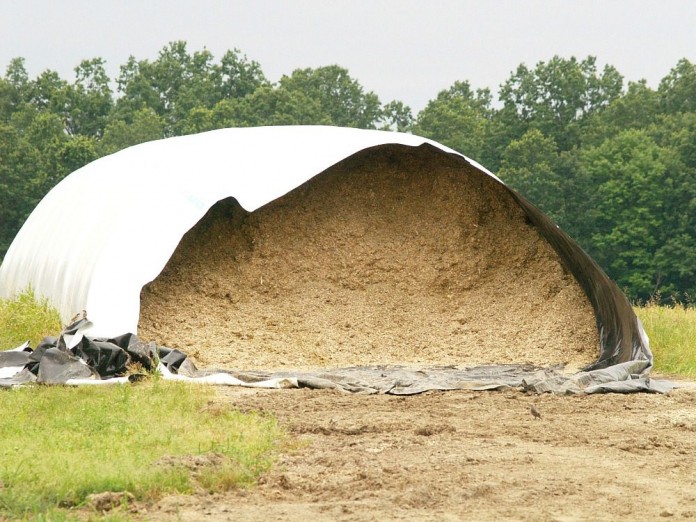Many corn producers have used fungicides on and off over the last few years to reduce leaf disease and, hopefully, mycotoxin levels that decrease cow performance. The 2020 corn silage and high moisture corn has had a long-lasting consequence for producers in certain areas of the state that saw DON levels well above 20 ppm.
The discussion is growing on using fungicides to prevent these high levels. The short answer is yes probably, but fungicide selection is very important.
We have two major challenges that fungicides are used for. First is leaf disease which can decrease the digestibility and fermentation of corn silage. The second is ear rots and stalk rot that produce mycotoxins. Just because a fungicide works well for leaf disease does not mean it will reduce ear rots.
Fungal attack
When a fungal disease infects the plant, you often see a natural response to the disease of an increase in lignification of the fiber, which results in decreased NDF digestibility. Fungal contamination of rust has also been found to reduce fermentation with final pH being higher when rust was present compared to corn silage treated with fungicide.
A study from the University of Illinois looked at treating silage corn with Headline or Headline AMP at V5 or R1 and the performance of Holstein cows compared to untreated corn. They used best management practice for disease selecting a corn variety with high levels of disease resistance.
At the time of fungicide application, there was no diseases detectable. At harvest, mycotoxins were detected in the silage across all treatments but levels were reduced for the fungicide applications with greater reductions at the R1 treatment timing. Milk production was the same but the corn with lower mycotoxin levels (treated with fungicide) did have increased energy corrected milk and better feed efficacy.
Studies focusing on leaf and stalk disease have found a positive relationship to fungicide treatment and energy corrected milk. Two fungicide treatments the first at V5 and the second at VT maximized return, a third treatment at V8 slightly increased energy corrected milk but not enough to cover cost.
Battling DON
DON is one of the primary vomitoxins toxins in Ohio corn. It is caused by the fungus Fusarium graminearum and causes both Gibberella stalk rot and Gibberella ear rot, making it of concern for both the grain and forage quality. This is also the same fungus that causes head scab in wheat causing both continuous corn and corn after wheat to have increased risk of disease.
Research is currently being conducted to better understand DON levels in silage. In one study under low disease pressure, they saw that in all cases but one, an application of fungicide at R1 reduced DON levels by at least 50%. The trial was then expanded the second year, which was a high disease pressure year with DON levels as high as 17.9ppm in one hybrid and 30.3ppm in the other hybrid. Again fungicide had little effect on these two BMR hybrids yield or forage quality, but a few products did consistently lower DON levels.
The products that consistently lowered DON levels contained a triazole as one of their active ingredients with prothioconazole being the most common. Three products that researchers across the country are seeing lower DON levels with when disease is present are Proline, Delaro and Miravis Neo.
The ideal application window from multiple studies has been R1 which is from the point when silks emerge until they become dry about 10 days later. This application is primary for Gibberlla ear rot which infects the ears during pollination. This does create some logistical issues with application require high clearance sprayers with drops for best results followed but an aerial application.
More work to do
What does all this mean? First, there is still a lot of work that needs done in this area for DON control, but the most common beneficial timing is R1 with a product containing a triazole.
Leaf disease often does not decrease corn silage tonnage but may reduce energy correct milk. Scouting for leaf disease is critical, especially in continuous corn. When under low disease pressure most studies have not found fungicides to economically increase grain yield.
Corn silage studies are finding an economical increase in energy correct milk do to increased feed efficiency on the corn silage that was treated with a fungicide at R1. This benefit is greatest for high-producing cows who need the highest ration digestibility.













